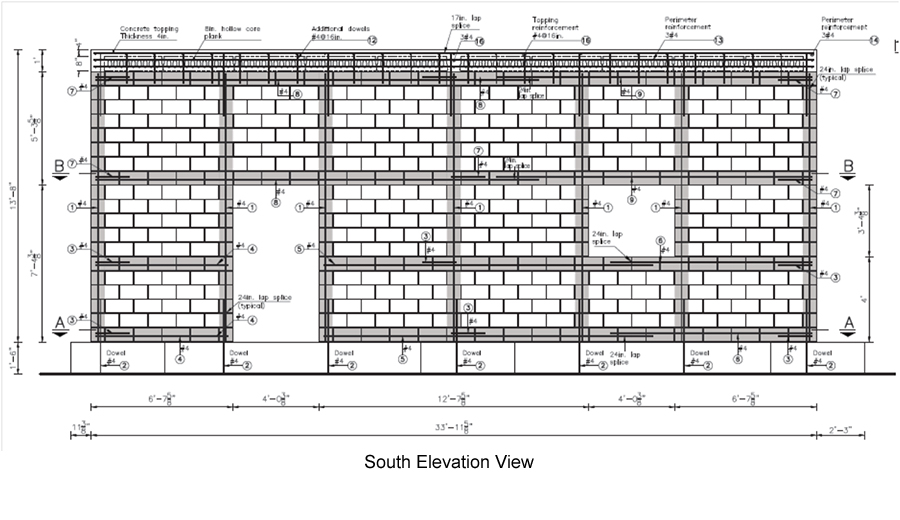Reinforced masonry constitutes about 10% of all low-rise buildings in the US. Many of them are commercial, industrial, and school buildings. While most of the reinforced masonry structures constructed in the West Coast are fully grouted, almost all reinforced masonry construction in the rest of the country, including regions of high seismic risk, has partial grouting to make it economically competitive. However, the seismic performance of partially grouted reinforced masonry wall systems has not been sufficiently studied and is not well understood due to the complexity of their behavior, which can be attributed to the heterogeneity and anisotropy introduced by masonry blocks, block cavities, mortar joints, and grouted cells. This project is to enhance the understanding of the behavior of partially grouted masonry structures at the system as well as component level, and develop and validate economically competitive, improved, design details and retrofit methods to enhance their seismic performance. This research is a collaborative effort of the University of California at San Diego, Drexel University, and the University of Minnesota.
In this project, two full-scale, single-story, partially grouted reinforced masonry buildings will be tested on the outdoor shaking table at the UCSD NEES Site to understand the seismic performance of such structures at the system level. One will have design details reflecting the current practice, while the second will have improved details. The behavior of each test structure will be monitored with about 300 sensors including strain gages, displacement transducers, and accelerometers. In addition, the strain fields developed in the walls will be monitored with DIC (Digital Image Correlation). In addition to the experimental research, advanced computational models have been developed and calibrated with data from quasi-static tests carried out at Drexel University and by researchers at the University of Minnesota using the Lehigh University NEES Site. The performance of the first structure to be tested on the shaking table has been evaluated by such a model.
The research is supported by the NSF under the George E. Brown, Jr. Network for Earthquake Engineering Simulation (NEES) program.
Investigators
| PI | P. Benson Shing | University of California, San Diego |
| Co-PI | Ahmad Hamid | Drexel University |
| Co-PI | Franklin Moon | Drexel University |
| Co-PI | Arturo Schultz | University of Minnesota |
| DIC Team | Antonios Kontsos and Ivan Bartoli | Drexel University |
| Graduate Student | Mohammad Bolhassani (Quasi-static tests) |
Drexel University |
| Graduate Student | Catherine Johnson (Quasi-static tests) |
University of Minnesota |
| Graduate Student | Andreas Koutras (Shaking-table tests) |
University of California, San Diego |
Contact Person
P. Benson Shing
pshing@ucsd.edu


